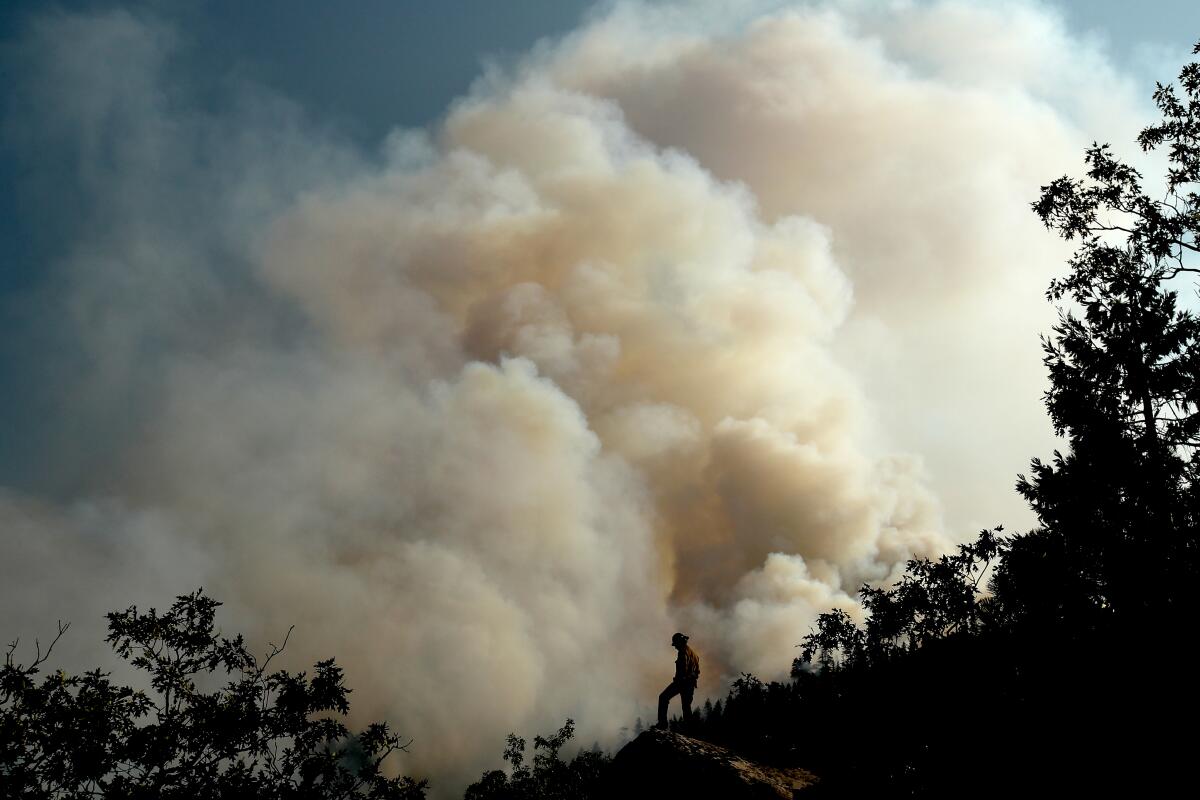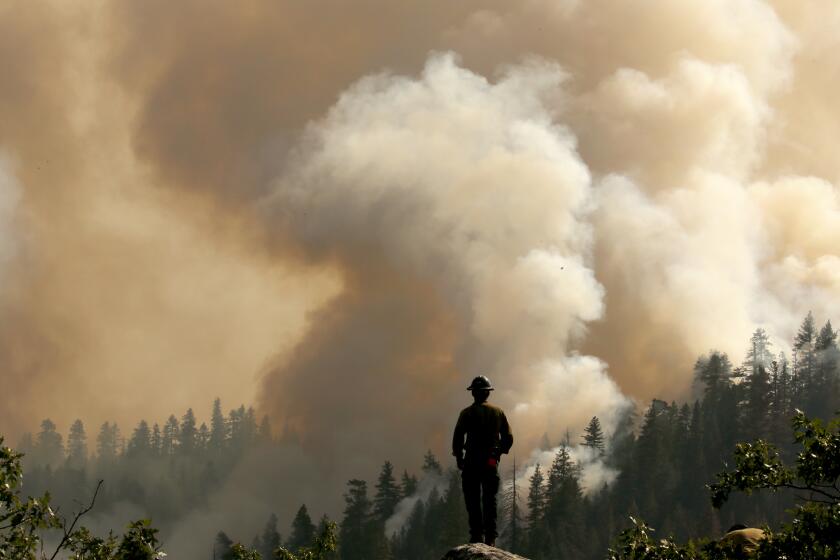Cal Fire cites ‘excessively delayed response’ by PG&E for spread of massive Dixie fire

- Share via
An “excessively delayed response” from Pacific Gas & Electric Co. enabled last year’s Dixie fire to spread in the early hours after ignition, the California Department of Forestry and Fire Protection concluded in a final report made public this week.
More than 10 hours elapsed from the initial spark at 6:48 a.m. on July 13, 2021, when a 65-foot Douglas fir fell and contacted PG&E conductors, until the blaze was discovered by a utility worker at 4:55 p.m., the report said. At that point, the fire was “too large for him to contain.”
The 963,309-acre fire was the second-largest in California history. It burned through federal, state and private lands in Butte, Plumas, Lassen, Tehama and Shasta counties before being contained in late October, the report says. The fire destroyed 1,311 structures and wiped out much of the town of Greenville.
“The prolonged response to the initial outage and fault that occurred at 6:48 a.m. was a direct and negligent factor in the ignition of the fire,” Cal Fire incident investigators wrote in the report. “Had PG&E arrived on the scene earlier, they could have detected the fault ... and opened the third fuse before it had time to ignite a receptive fuel.”
California’s second-largest wildfire on record was started when a tree came into contact with electrical lines, Cal Fire investigators determined.
Cal Fire announced its findings in January but did not make the report publicly available. PG&E this week received the report and released it on its website, along with a statement.
“We previously shared an extensive amount of information on the fire and stand by our position that we acted as a prudent operator,” the statement says. “This report does not change our perspective.”
The statement continues, “There was no indication of an emergency until our troubleman arrived at the scene soon after the fire had started. Consistent with our policies and standards, the troubleman worked diligently for hours to get to the site, including after being turned away by a county road crew, and fought the fire heroically by himself before Cal Fire arrived.”
PG&E also stood by its initial finding that the tree was “alive, vital and growing vertically at the time of the failure.”
Arborist Joe McNeil, consulting for Cal Fire, concluded in his report that the tree had been previously damaged and decayed, which would have been “noticeable at the ground level by inspectors pre-fire, without extraordinary effort.”
Cal Fire investigators noted that several wildfires had ignited in recent years in the same area, including the deadly 2018 Camp fire, which was also linked to PG&E equipment.
“The month of July in Butte County and surrounding areas is peak fire season, yet no sense of urgency was demonstrated by PG&E to determine the cause of the fault in a fire prone area during a severe time of year,” the report says.
PG&E Corp. has reached a deal with prosecutors over starting two major California wildfires and will avoid criminal prosecution.
In April, PG&E avoided criminal prosecution for the Dixie fire as part of a settlement agreement in which it admitted no wrongdoing. The utility agreed to pay about $55 million over five years in civil penalties and payments to local nonprofit and educational organizations, as well as other costs. PG&E also agreed to launch a program through which those who lost homes can submit claims for expedited review, approval and payment of compensation.
The utility in 2019 filed for bankruptcy protection to shield itself from tens of billions of dollars in potential liabilities after fires in 2017 and 2018 ignited by its electrical grid killed more than 100 people. It emerged from bankruptcy in 2020, with officials promising it would be a “reimagined utility.”
Times staff writer Alex Wigglesworth contributed to this report.
More to Read
Sign up for Essential California
The most important California stories and recommendations in your inbox every morning.
You may occasionally receive promotional content from the Los Angeles Times.











